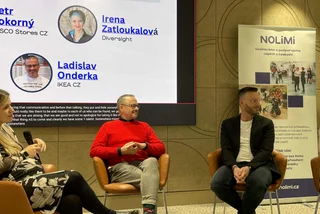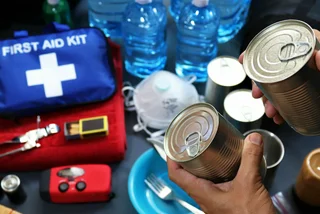Several Czech cities, including Prague, Brno, and Ostrava, have reintroduced enhanced disinfection of public transport vehicles in response to a surge in hepatitis A cases. While the virus is typically mild, especially in children, it can be serious for older adults and those with pre-existing liver conditions.
Since January, nearly 400 cases of hepatitis A have been recorded nationwide—well above the usual numbers for this time of year. Prague alone has reported 69 confirmed infections, prompting local authorities to ramp up cleaning protocols on trams, buses, and metro trains, similar to measures taken during the Covid-19 pandemic.
“All surfaces accessible to passengers, including grab bars, buttons, and seats, are disinfected daily with a stronger solution,” said Aneta Řehková, spokesperson for the Prague Public Transit Company (DPP). Cleaning times have doubled to two hours per tram, with a renewed focus on high-touch areas. Metro trains and buses are also part of the disinfection efforts.
Though advanced methods such as UV lamps and ozone generators were considered, officials found manual cleaning with disinfectant to be the most effective.
How Hepatitis A spreads
Hepatitis A is a liver infection that spreads through spreads through contact with infected stool, typically via unwashed hands or contaminated surfaces like handrails. Most people, particularly children, are asymptomatic, which complicates tracking the virus. However, some individuals develop flu-like symptoms followed by jaundice (yellowing of the skin and eyes).
So far this year, six hepatitis-related deaths have been reported, all involving patients with chronic liver disease.
Public health authorities in Prague have begun vaccinating around 200 social workers who interact with high-risk groups, including homeless individuals and drug users, who account for about a quarter of the capital’s cases.
“The most effective prevention is vaccination, which provides long-term protection,” said Dr. Martina Marešová of the Prague hygiene station.
Vaccination efforts in Prague
While children as young as one can receive the vaccine, it is not routinely offered to the general population. The cost of the full course is around CZK 3,400, though some insurance providers offer partial reimbursement. Despite the rise in cases, demand for the vaccine remains low, partly due to its cost and required paperwork.
Public health authorities in Prague are vaccinating roughly 200 social workers who regularly interact with high-risk groups, including people without housing or those who use drugs—two groups that account for about a quarter of the capital’s cases.
“The most effective prevention is vaccination. It provides long-term protection and is well-tolerated,” said Dr. Martina Marešová of the Prague hygiene station.
Hepatitis A: Overview and facts
- Virus spread: Primarily through unwashed hands and contaminated surfaces.
- Symptom onset: Two to seven weeks after exposure, symptoms may include jaundice.
- Outbreaks: Most concentrated in urban areas, with Prague being the hardest hit.
- Vaccination availability: Vaccines are available but not routinely offered to the general public.
- Disinfection measures: Public transport in affected cities has ramped up sanitation protocols, including daily disinfection of touchpoints.
Other Czech cities respond
In Brno, public transport officials have resumed daily disinfection, using ozone machines for additional interior cleaning. The city has reported six hepatitis A cases this year, including two linked to recent international travel.
Ostrava, which saw a significant outbreak last year, has increased its cleaning efforts, including emergency disinfection when necessary. With over 260 cases since early 2023, the city remains one of the hardest-hit areas.
South Bohemia has also seen a small outbreak, with 20 confirmed cases in the Prachatice area. In response, around 600 people, mostly from one affected school, have been vaccinated. Infected children are isolated, and classmates must stay home from group events for up to 50 days unless vaccinated.
Authorities urge the public to wash hands regularly, avoid sharing utensils, and consider vaccination if they are in high-contact professions or areas with outbreaks.
What's the difference between hepatitis A and other types?
Hepatitis A is a liver infection spread through close contact or contaminated food and water. Symptoms appear 2-7 weeks after exposure and may include fatigue, nausea, abdominal pain, and jaundice.
The virus thrives on smooth surfaces, making hygiene crucial in public spaces. While many cases resolve without treatment, complications can arise for older adults or those with pre-existing conditions.
In contrast to hepatitis A, other types of the virus (B, C, E) spread differently and require specific prevention methods. Vaccination for hepatitis B is mandatory for Czech children, but no vaccines exist for hepatitis C or E.












 Reading time: 3 minutes
Reading time: 3 minutes 


 English
English
 Finnish
Finnish
 Slovenian
Slovenian
 Swedish
Swedish
 Norwegian
Norwegian
 Danish
Danish
 German
German
 French
French



























